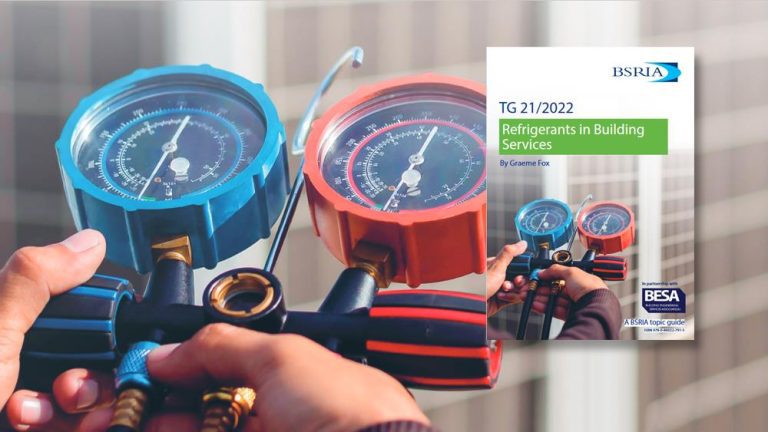Air conditioning innovator, Weatherite, celebrates 50 years in business. West Bromwich-based, Weatherite, has racked up 50 years of operation, a milestone that reflects the strength, stability, and success only a few companies ever achieve. Founded in 1972 by current Chairman John Whitehouse, Weatherite’s early days of business were carried out from a sun lounger with his late business partner, Lou Simmonds, and over the last 50 years as John recalls “it’s been quite a journey”. Its defining qualities over the past five decades have been a combination of ability, agility, flexibility and responsiveness, and proof that thriving, not just surviving, is a true test of grit in business. The company began life selling Diakin air conditioning equipment and as John recalls his first ever order “was a job in Combe Abbey and was designed, installed and wired by us and worth £585.” Weatherite soon began rapidly expanding by selling more HVAC equipment, so much so, that six years later the company moved to larger premises and started its journey into manufacturing its own equipment. “This was a game changer when we received an order for a huge fan-coil unit order for local office block “Midland-House” in Halesowen – a £250,000 job. It considerably improved cashflow and helped us ride out the peaks and troughs in the AC market.” Then came the 80s when Weatherite built its first free-cooling telephone exchange cooling unit for telecoms giant BT– still one of its flagship products, albeit somewhat evolved, 42 years on. The company continued to supply over 15,000 units across the UK, first in the Midlands, then Manchester and Wales. But it was as London got to grips with the digital exchange that work really started to take off for Weatherite. “That’s when we seriously got into manufacturing as a business. When BT called, we sprang into action, designing and testing within three weeks,” he said. Another significant milestone in the mid-80s came when Tesco made its was first order for a ‘packaged’ Rooftop Air Conditioning Unit. “We had been making regular trips to Daikin’s Japanese factories and became increasingly impressed by the quality and detail of their equipment,” said John. “We soon realised that we had a number of well-trained engineers in the factory to give us the ability to manufacture our own bespoke designs. “Tesco and Marks & Spencer grabbed us by the collar and took us aboard the retail express train. We moved premises again and doubled the workforce to cope with the expanding demand as they were both developing their sales floor areas and needed air conditioning. Needless to say the 90s were a period of considerable growth and Weatherite also acquired DLT Shopfronts & Shutters Ltd, as part of an opportunity with Tesco. Now named Weatherite Aluminium Solutions Ltd, the company works for many major UK retailers and contractors delivering bespoke manufacturing solutions for commercial security systems including shopfronts and high end curtain walling systems, windows and doors. Weatherite’s free cooling and AHU systems were being manufactured at an extraordinary rate during this period before the decades of trigeneration, power generation, heating and cooling which then moved towards the more user-friendly “energy centres”, driven by Tesco’s need for onsite energy – a demand that quickly widened to other supermarkets. In the early 2000s, Weatherite started working with JLP, Waitrose, Sainsbury’s, Next, Primark and continued to grow its retail portfolio. In 2006 Weatherite moved into larger premises to cope with further demand for its expanding HVAC product solutions. A concerted push to target the data centre market was made in 2008 with its extensive knowledge (through BT) of IT mission critical cooling techniques, ensuring the company continued to expand. In 2012, the company celebrated its 40 years in business and grew its data centre business with clients including Virtus, EE, Equinix, Vodafone, Virgin Media, to name a few. As well as telco and retail, the company further expanded into other sectors including leisure, pharmaceuticals, and health. Weatherite was soon recognised as the UK’s largest independent manufacturers of bespoke HVAC equipment in all sectors and won its largest ever single data centre order valued at over 12 million euros, as well as industry awards along the way. Today the business turnovers over £34 million as a Group, primarily through Weatherite Air Conditioning, which represents the major proportion of that turnover with about £25 million. Like many other businesses, the company has encountered some major obstacles over the last few years but working with organisations which operate within a mission critical environment has meant the company continues to thrive. “We survived the effects of the pandemic in good shape and are looking forward to an interesting market in very interesting times, said John. Weatherite has recently doubled the size of one of its existing factories and continues to invest in new manufacturing equipment and storage areas to counter-manage the global shortage and price hike on raw materials. There are many who will affirm that John’s entrepreneurism, leadership, and willingness to take a risk on ideas are the major reason for the company’s success. “We never walk away from a problem. If we’ve got a problem, we solve it satisfactorily,” says John. However, it takes more than one person to make a successful business and marking the five-decade milestone is an opportunity to both reflect on its past and to look forward to its future. John’s son, Tim, has also worked at the business for the past 25 years and John believes an emphasis on family helps when it comes to retaining staff. “There’s a big difference between being a family business and being part of a multi-national. There is a bigger sense of belonging. We have a lot of people who have worked at the company for a long time – our staff retention is excellent and somewhere between ten and fifteen people have one or more family members working here out of a workforce of 209,” he said. “We would like to think that our continued success can be attributed














